Whether or not you’re new to selling online, chances are you’ve considered using upsells to increase average order value (AOV) and to provide a convenient, quality addition to your customer’s shopping experience.
And if not, it’s time to start!
But not all upsells are the same. The content you have on your upsells, the products you’re offering, and even the location of your upsell impact how successful they’ll be.
Let’s dive deeper into the world of upselling and cross-selling and get into the nitty-gritty of how to optimize that upsell so your customers can’t resist!
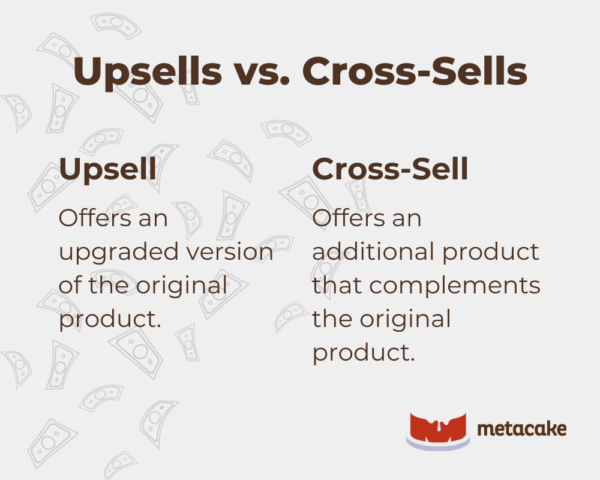
The Basics
Just in case you’re new to upselling, we’ll quickly go over the basics.
Think back to a time when you were at a restaurant. Did the server offer you cheese toast instead of regular garlic toast? Or a bowl of soup instead of salad for an extra two dollars?
You’ve been upsold, my friend.
Upsells encourage customers to spend a little more by offering a better or upgraded version of the product they’re already interested in buying.
A cross-sell, on the other hand, offers the customer an additional product that complements the current product they’re already interested in buying, adding it to the cart alongside the original item.
Back to our restaurant example: An infamous cross-sell from McDonald’s is the classic “Would you like fries with that?” The fries complement the burger you’re buying rather than replace it.
Why They Work
They work because they’re convenient. The offers are presented right in front of shoppers, so they don’t have to go searching for them. As the world moves faster and our technology improves, time-savers are a necessity, and shopping is no different.
You can grab an item online, move to the checkout, upgrade your item to a better one you didn’t know existed, and check out in minutes.
Upselling offers value, too. You can present an enticing opportunity to upgrade to a better, higher-grade product or offer convenient extras that customers may not have known they needed.
I know what you’re thinking: Upselling is annoying, right? No one likes to get chased around by a pushy salesperson.
But, when you’re offering relevant products that complement the product(s) shoppers are already interested in, you’re providing value to your customers and saying, “Here are similar items or a slightly better product I think you’d like.”
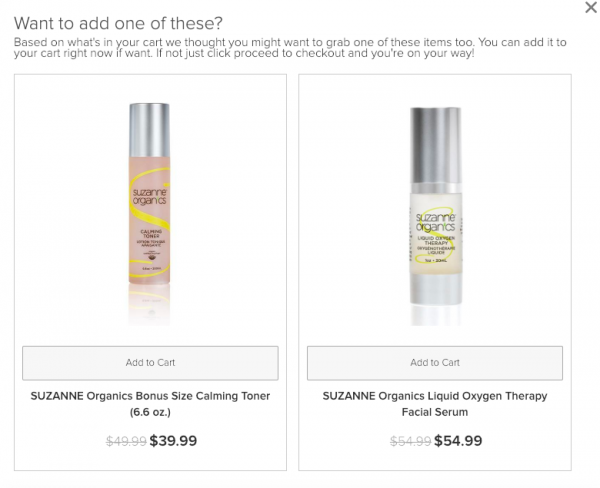
When done right, you’re providing more value to the product for your customers, and in turn, they’ll associate your company with that value.
You bought a coffee maker? You might need coffee filters to go with it. Or how about a coffee maker that holds even more coffee? (I would definitely pay for more coffee!)
Upselling vs. Cross-Selling
As always, testing is a great way to find what works for your business. But we’ll let the numbers speak for themselves.
In 2006, upsells accounted for 35% of Amazon’s annual revenue. That’s a huge chunk of your incoming cash flow! Amazon still uses upsells today, so that shows how impactful it’s been over the long term.
Compared to cross-selling, upselling has been shown to generate 2,000% more sales, according to a study by Econsultancy.
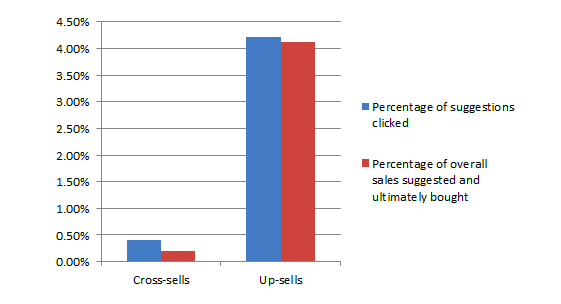
In fact, upsells drive over 4% of total sales, while cross-selling generates around 0.2%.
Why? People are more likely to purchase a product they already want; you don’t have to convince them to buy it. And, since they’re already in buying mode, upgrading to a better product is a simple choice as long as it offers more bang for your buck than the initial product they planned on buying.
Now, Let’s Optimize!
What to Offer
If you’re unsure of what products you should be upselling, try looking at a list of your inventory. Break the list into regular products and higher-end versions of those products. The higher-end versions are the products you’ll want to use for your upsells.
Whether you choose to offer upsells or cross-sells, make sure the items you’re offering are still in a similar price range to the product that your customers originally wanted. For cross-selling, offering cheaper, related products is perfect.
For upselling, make sure the upgrade is still within the ballpark of the cost of the first item. Not a lot of people are going to ditch a $50 product for a $500 one.
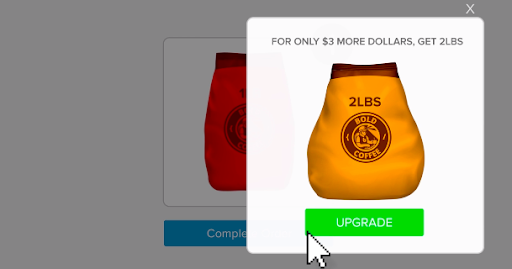
Remember, your upsell should be an improvement on the original product but still a reasonable trade. If you offer a gift pack that includes the original item, that’s a great trade-off. The customer still gets the product they want (with some great additional goodies), and you just increased their AOV!
To really push that new product, one of the smartest moves you can make for your upsells is to include product reviews.
Almost every shopper looks at reviews before making a purchase! In fact, 97% of shoppers say that social proof influences their purchasing decisions. Trust is a huge facet of online shopping and plays a large role in whether or not people feel comfortable hitting that “checkout” button.
Bold’s Upsell app features an integration with Yotpo (a review solution) to include visual star ratings that so many people recognize. It’s an easy way to ease hesitation for customers who are considering upgrading to another product or adding additional items to their cart.
How to Word It
At the top, you’ll want a short, clever message that draws the customer in. One sentence will do the trick!
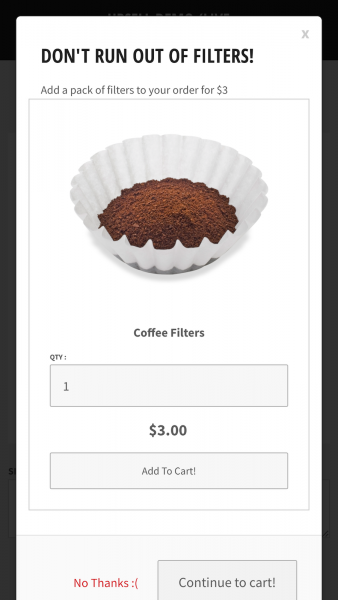
Depending on your product and your audience, you can target certain features you think your audience would like.
For example, if you’re selling batteries and you have an upgrade to the basic model, choose a feature like shelf life to grab customers’ attention — something like, “Want a battery that lasts four times longer?”
As always, white space is your friend. You want to include enough information that the offer is enticing but doesn’t overwhelm your shoppers. You can list the product description underneath the product itself in a clean, easy-to-digest manner.
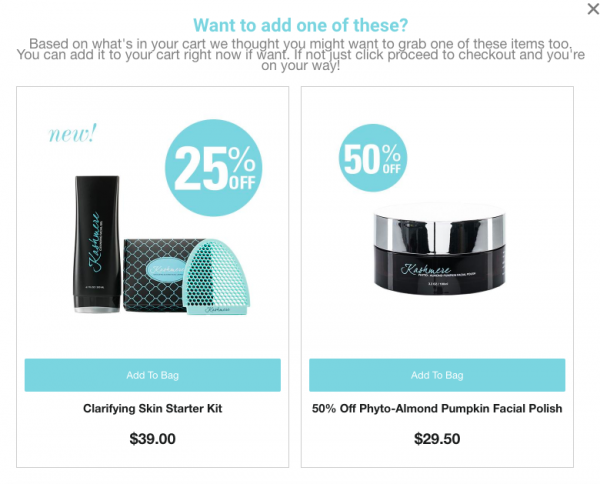
This is especially true for upsell offers; be sure to include the specs of the product so the difference between the new product and the product they’ve already chosen is clear.
Let’s say you’re upselling a 65-inch TV, and the product they originally wanted was a 55-inch. The larger TV is obviously an upgrade, so make sure that’s the first thing people see.
On the other hand, picture quality is a very important aspect for many people. If both TVs are 1080p, make sure that’s listed, too. As a rule of thumb, include the most important product details in a listed format. Avoid over-explaining or using large paragraphs; just stick to the facts!
While you can offer multiple products in an upsell, it’s best to keep the number of products upsold to a minimum to avoid overwhelming customers. We recommend one to two products maximum for most offers.
Placement Is Everything
Where you place your upsell has a big impact on the buyer journey and can be the decision-maker to persuade customers to grab that extra item or upgrade the goodies in their cart.
Upsells on the product page and the cart page have always worked great. You can choose which products you’d like to include upsells for and make highly relevant offers for that single product.
Offers on the cart page are slightly more effective since the customer is further along in the sales funnel.
But there’s always the risk of annoying some customers or having them click out of the upsell without paying attention in order to move along toward the checkout.
Upselling after checkout, however, is highly underutilized and has become the highest-converting upsell location to date.
Why? The customer has already decided to trust you and has committed to buying from you! They’ve entered their payment and shipping details and are happy with the buying journey.
Plus, it’s super easy to add to the order since customers don’t have to enter any additional information — it’s one click and they’re set.
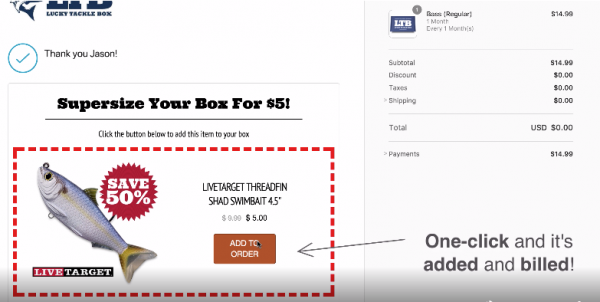
Learn how to set up a one-click upsell here.
Without any disruption to the sales funnel, you can hit them with a last-chance offer that’s hard to refuse. Better yet, you can add a countdown timer to this post-purchase upsell to really drive the impulse buy.
And since customers have already committed to buying before you upsell, they’ll see more value in adding an additional item to their order.
Remember, you’re trying to provide more value to your customers, not just grab some extra revenue. Be wise with your upselling decisions, and only offer upsells and cross-sells that complement or improve the products they’re already interested in. By keeping upsells simple and relevant, you’re sure to please your customers while increasing AOV.
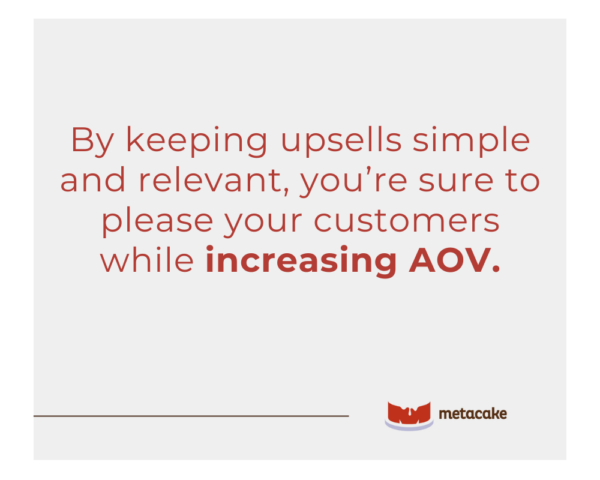
How to Upsell: Final Thoughts
We hope that the knowledge we’ve shared on how to upsell will be a valuable tool for you in your ecommerce journey.
If you need a hand implementing these practices, don’t hesitate to reach out to our excellent team members. We’re always eager to assist!
Written by Amy Polowy
Amy is the Partner Marketing Manager at Bold Commerce. Bold empowers over 80,000 merchants in more than 170 countries around the world with their ecommerce apps and solutions that are designed to unleash the potential of ecommerce platforms.
